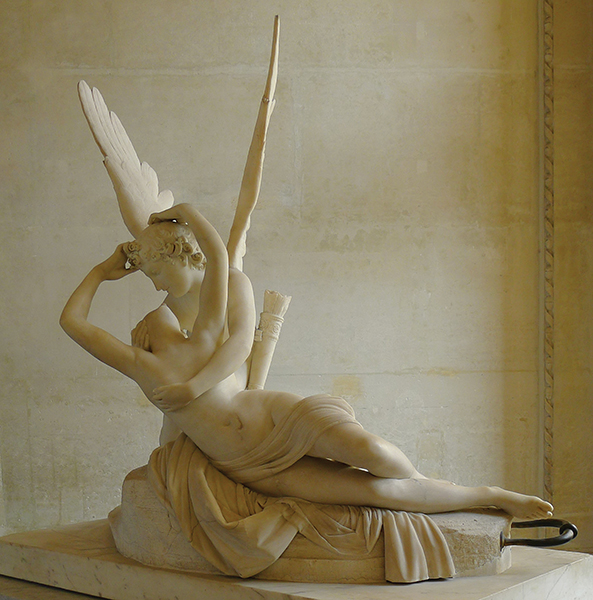What do the tangerine-colored Guianan Cock-of-the-Rock, which looks like it’s wearing an orange slice for a crest; the pink-footed Black-bellied Whistling Duck, with its corkscrew-shaped privates; and the rest of our fine, feathered friends have to do with the #MeToo movement?
If you’re Richard O. Prum, more than you might imagine.
Prum — professor of ornithology at Yale University, head curator of vertebrate zoology at the Yale Peabody Museum of Natural History and a passionate bird watcher since he was a child in Manchester Center, Vermont, — has written a fascinating, provocative book that theorizes that evolution and, specifically, Charles Darwin’s theories of evolution, are not just about what species need to adapt for survival and reproduction. In “The Evolution of Beauty: How Darwin’s Forgotten Theory of Mate Choice Shapes the Animal World — And Us” (Doubleday, $30, 428 pages) — one of The New York Times’ 10 Best Books of 2017 — Prum writes that evolution is also about what species want, what pleases their eyes and their libidos. And this has far-ranging consequences for the so-called “battle of the sexes,” whose latest front is the fight against sexual harassment.

There are some ideas in “The Evolution of Beauty” that we wouldn’t give you two cents for. We’re tired of everyone who isn’t in the arts thinking he is an artiste. Prum speaks of “biotic artworlds,” as if “bird songs, sexual displays, animal-pollinated flowers, fruits and so on are art, too.” No, those are aspects of reality, and art is about metaphor, a kind of heightened reality.
Prum also writes that, contrary to myth, men are as sexually choosy as women, citing James Bond and Don Juan as literary examples. All we can say is that anecdotally, we have found men to be like the Madison Avenue bus: Miss one and another will be along presently.
Prum further notes that beauty is not about symmetry, citing Marilyn Monroe, Madonna and Cindy Crawford as “three of the 20th century’s most glamorous and sexually idolized American women” who “came to fame with prominent, symmetry-defying facial moles.” But we would argue that symmetry plays a large role in beauty, which, to us, is only about bone structure.
Still, when Prum talks about how the human male and female bodies evolved to satisfy our aesthetic and sexual desires — much in the way peacock plumes developed to attract peahens — he reframes the relationship between men and women, forcing us to consider it in a thrillingly new way. The female body’s hourglass shape and youthful facial features, such as large eyes, were not necessary to propagate the species. Women could have had the smaller boobs and butts of their primate cousins. But this is what men desired. Similarly, male privates, with their boneless phallus, larger scrotum and smaller testes, have evolved that way to give women greater sexual pleasure, regardless of reproduction.
The jury is still out, however, on whether women prefer the more refined Apollonian model of male looks, the burlier Herculean model or something in between. The few studies that have been done on this, Prum writes, have yielded mixed results.
The complexity that is love, he realizes, is about a lot more than looks. The qualities that make up a good character and personality — “humor, kindness, empathy, thoughtfulness, honesty, loyalty, curiosity, self-expression and so on” — are crucial.
“Female mate choice in human evolution has focused largely on social rather than physical traits,” Prum writes. “In the long run, women have evolved to want mates who will be good partners to them and good parents to their children.”
So why is it, then, that women don’t always get what they want?
This is where sexual conflict theory — with its competing evolutionary forces — comes in. On the one hand, nature and culture have evolved phenomena to make women safe and independent, sexually and otherwise. These include, Prum writes, everything from the smaller difference in size between men and women — relative to the differences in size between males and females in other primates — to homosexuality, which mitigates against male competition for females. But female sexual autonomy is a defense mechanism, Prum adds:
“As long as males continue to evolve mechanisms to advance their capacity for sexual coercion and violence, females may remain at some disadvantage. As I explained in the context of duck sex, the ‘war of the sexes’ is highly asymmetrical — not really a war at all. Males evolve weapons and tools of control, while females are merely coevolving defenses of their freedom of choice. It’s not a fair fight.”
Which brings us to patriarchy and feminism — with Prum describing the latter not as an ideology of power and control but one of freedom of choice — both of which have reemerged with renewed strength today.
“Watching recent political battles over birth control and reproductive rights in the United States, many experienced observers have remarked, ‘But I thought all these issues were settled decades ago!’ Unfortunately, if these events are part of a cultural sexual conflict arms race, we can expect that the struggle for female sexual autonomy will continue as each side innovates new countermeasures to neutralize the previous advances by the other.”
It’s not hard to extrapolate from Prum’s observation here that sexual harassment has long been a tool of the patriarchal status quo, while the #MeToo movement has emerged as the counterinsurgency.
So, are we condemned to be locked in this struggle? Is biology destiny, as Sigmund Freud famously observed?
“Patriarchy is a product not of our evolutionary history nor of human biology per se but of human culture,” Prum writes. “Beginning with 19th century feminist movements for women’s suffrage, access to education and rights to property and inheritance, there has been a culturally coevolved effort to counteract the control of patriarchy and to reassert and advance female sexual autonomy and freedom of choice. Although it took thousands of years to happen, the results of these efforts — legal recognition of women’s suffrage, universal human rights and the abolition of legal slavery — are demonstrations that it is possible to dismantle deeply ingrained components of patriarchy that are often, still, erroneously considered as biologically ‘natural.’”
For more, visit prumlab.yale.edu.




